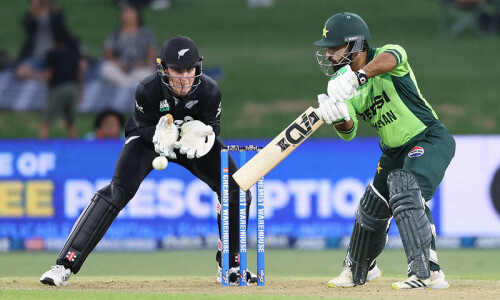
ISLAMABAD, Dec 4: Battered by military operations and US drone strikes, the once-formidable Pakistani Taliban have splintered into more than 100 smaller factions, according to security officials, analysts and tribesmen from the militant heartland.
The group, allied with Al Qaeda and based in the northwest close to the Afghan border, has been behind much of the violence tearing apart Pakistan over the last four years. Known as the Tehrik-i-Taliban Pakistan, or TTP, the Taliban want to oust the US-backed government and install a hard-line Islamist regime. They also have international ambitions and trained the Pakistani-American who tried to detonate a car bomb in New York City’s Times Square in 2010.“Today, the command structure of the TTP is splintered, weak and divided and they are running out of money,” said Mansur Mahsud, a senior researcher at the Fata (Federally Administered Tribal Area) Research Centre. “In the bigger picture, this helps the army and the government because the Taliban are now divided.”
The first signs of cracks within the Taliban appeared after their leader, Baitullah Mehsud, was killed in a drone strike in August 2009, Mahsud said. Since then, the group has steadily deteriorated.
Set up in 2007, the TTP is an umbrella organisation created to represent roughly 40 groups in the tribal belt plus Al Qaeda-linked groups headquartered in Punjab province.
“In different areas, leaders are making their own peace talks with the government,” Mahsud added. “It could help the Pakistani government and military separate more leaders from the TTP and more foot soldiers from their commanders.”
The two biggest factors hammering away at the Taliban’s unity are US drone strikes and Pakistani army operations in the tribal region.
Turf wars have flared as militants fleeing the military operations have moved into territory controlled by other militants, sometimes sparking clashes between groups. And as leaders have been killed either by drones or the army, lieutenants have fought among themselves over who will replace them.
“The disintegration... has accelerated with the Pakistan military operation in South Waziristan and the drone attacks by the United States in North Waziristan,” Mahsud said, referring to the two tribal agencies that are the heartland of the Pakistani Taliban.
Another factor is the divide-and-conquer strategy the military has long employed in its dealings with militants. Commanders have broken away from the TTP and set up their own factions, weakening the organisation. —AP












































